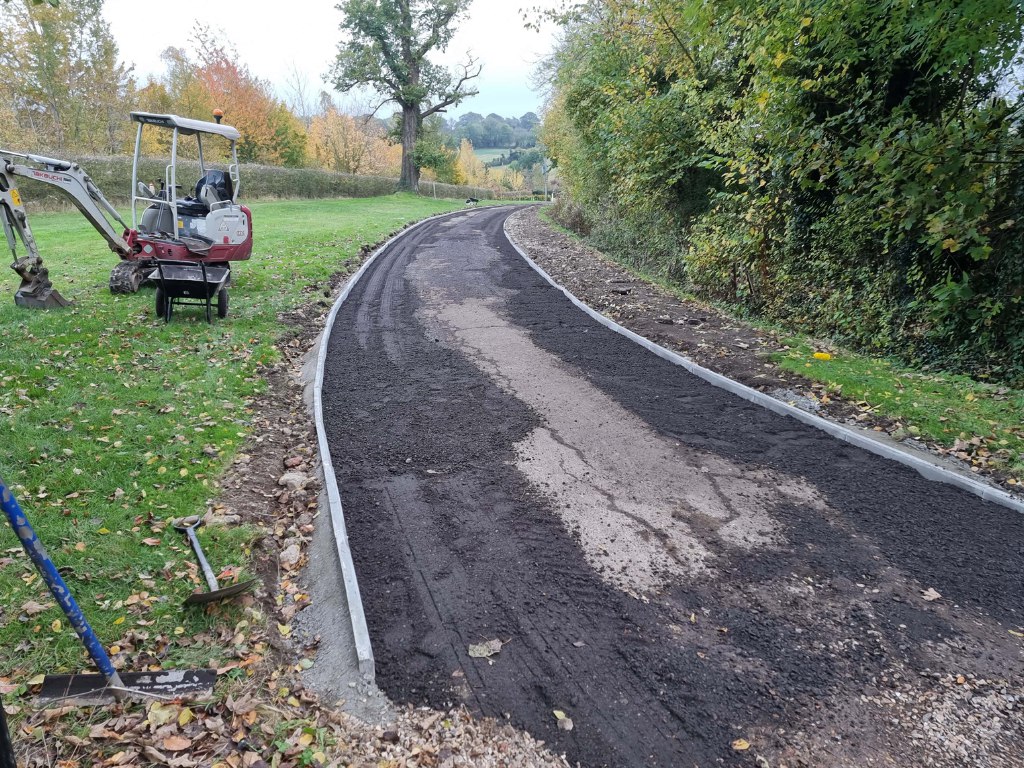What to Do If Your Tarmac Driveway is Deteriorating Prematurely
A tarmac driveway is a popular and cost-effective option for many homeowners due to its durability and smooth finish. However, like all surfaces, tarmac can start to show signs of wear and tear over time. If your tarmac driveway is deteriorating prematurely, it’s essential to understand the potential causes and how to address the issue effectively. In this article, we’ll explore the common reasons why your tarmac driveway might be deteriorating and the steps you can take to restore it, ensuring it continues to serve you for years to come.
1. Identify the Root Cause of the Damage
Before taking any action, it’s important to pinpoint the reason for your tarmac driveway’s deterioration. Some common causes of premature wear and tear include:
- Poor installation: If your driveway wasn’t installed correctly, it may not have been compacted properly, or the surface may have been laid too thinly. This can lead to cracking, unevenness, or general wear sooner than expected.
- Water damage: Excessive water pooling on the surface or poor drainage can erode the tarmac, leading to cracking or potholes. Water can seep into cracks, freeze in colder months, and further damage the surface.
- Heavy traffic: If your driveway is subjected to excessive weight or frequent use by heavy vehicles, it can cause the surface to crack or become uneven.
- Weather conditions: Extreme weather conditions, including heavy rain, heat, or freezing temperatures, can also cause tarmac to degrade more quickly. UV rays from the sun can break down the surface over time, making it more vulnerable to cracks.
By identifying the underlying cause, you can determine whether it’s an issue with the installation, maintenance, or external factors that need addressing.
2. Regular Maintenance is Key
If you notice early signs of deterioration, such as cracks, fading, or small potholes, it’s important to address them promptly. Regular maintenance can significantly extend the lifespan of your tarmac driveway. Here are some steps to consider:
- Fill in cracks and potholes: Left unattended, small cracks can widen, leading to larger, more expensive repairs. Filling in these cracks with appropriate tarmac filler is a simple but effective way to prevent further damage.
- Clean the surface regularly: Dirt, debris, and moss can accumulate on the surface, causing it to deteriorate faster. Regular cleaning with a pressure washer (or a hose and brush for gentler care) will help remove dirt, preventing staining and potential erosion.
- Seal the surface: Applying a sealant every few years can provide an additional layer of protection against weather, water, and UV damage. This helps maintain the surface’s integrity and prevents cracking or fading.
3. Ensure Proper Drainage
Poor drainage is one of the leading causes of tarmac deterioration. Water can seep into cracks, weakening the surface and causing further damage. Ensuring your driveway has adequate drainage is crucial. Here’s how to improve it:
- Install or repair drains: If your driveway has existing drains, make sure they are clear of debris and functioning correctly. If your driveway lacks drainage, consider installing drainage channels or a French drain system to direct water away from the tarmac surface.
- Ensure proper slope: A tarmac driveway should have a slight slope to direct water off the surface. If water tends to pool in certain areas, it may be worth consulting a professional to adjust the slope and prevent water damage.
4. Consider Professional Resurfacing or Repair
If your tarmac driveway has significant damage or is beyond the scope of minor repairs, it may be time to consider resurfacing. A professional contractor can lay down a new layer of tarmac over the existing surface, providing a smooth and fresh look without the need for a complete replacement. This process is cost-effective and can restore the aesthetic appeal and functionality of your driveway.
In cases of severe damage, such as large cracks or extensive potholes, full tarmac replacement might be the best option. A professional team can assess the situation and provide a tailored solution, ensuring that your new driveway meets your needs and lasts for many years.
5. Prevention is Better Than Cure
To avoid premature deterioration in the future, consider taking steps to protect your tarmac driveway before problems arise:
- Limit heavy traffic: Try to avoid parking heavy vehicles on your driveway, as this can put unnecessary strain on the surface.
- Use protective mats: If you regularly park vehicles in the same spot, consider using mats or rubber covers to protect the surface from oil stains and wear.
- Regular inspections: Perform a visual inspection of your driveway every few months to catch any small issues before they turn into major problems.
Conclusion
A deteriorating tarmac driveway doesn’t have to be a major headache. By identifying the cause of the damage, carrying out regular maintenance, ensuring proper drainage, and seeking professional help when necessary, you can restore your driveway and extend its lifespan.
If your tarmac driveway is showing signs of deterioration, contact the experts at NS Driveways Aldershot. Our experienced team can help with repairs, resurfacing, and complete replacements, ensuring your driveway stays in top shape for years to come. Reach out today for a consultation and take the first step towards restoring your driveway’s appearance and durability.
Call us on: 01252 979 997
Click here to find out more about NS Driveways Aldershot
Click here to complete our contact form and see how we can help with your driveway needs.

